The relatively rare German heavy Panzerjäger Tiger (P) SPG, more commonly known as the Ferdinand, left a noticeable mark in history. The name «Ferdinand» itself became denominative: Ferdinands were spotted on all parts of the Soviet-German front until the end of the war. In practice, only 91 vehicles were built, and the Ferdinand was only used en masse in the summer of 1943, during Operation Citadel at the Battle of Kursk. The Germans lost more than a third of these vehicles there.
Despite the fact that the Ferdinands (as well as the Elefant) were used very sparingly, they showed themselves as effective anti-tank guns. The Red Army command treated the child of Porsche K.G. and Alkett seriously. The appearance of the Ferdinand on the front lines reflected itself in the development of Soviet tanks, tank guns, and SPGs.
A strike force in the north
The Red Army GBTU had no idea that the Germans had produced such an impressive fighting vehicle. The rest of the Allies also suspected nothing. The explanation is simple: the Panzerjäger Tiger (P) were built in the spring of 1943 and went into battle in early July. Information about the Ferdinand did not have enough time to slip through the front lines during the short preparations for Operation Citadel. Even information (albeit incorrect) about the Panther, which also made its debut at Kursk, did manage to make it across.
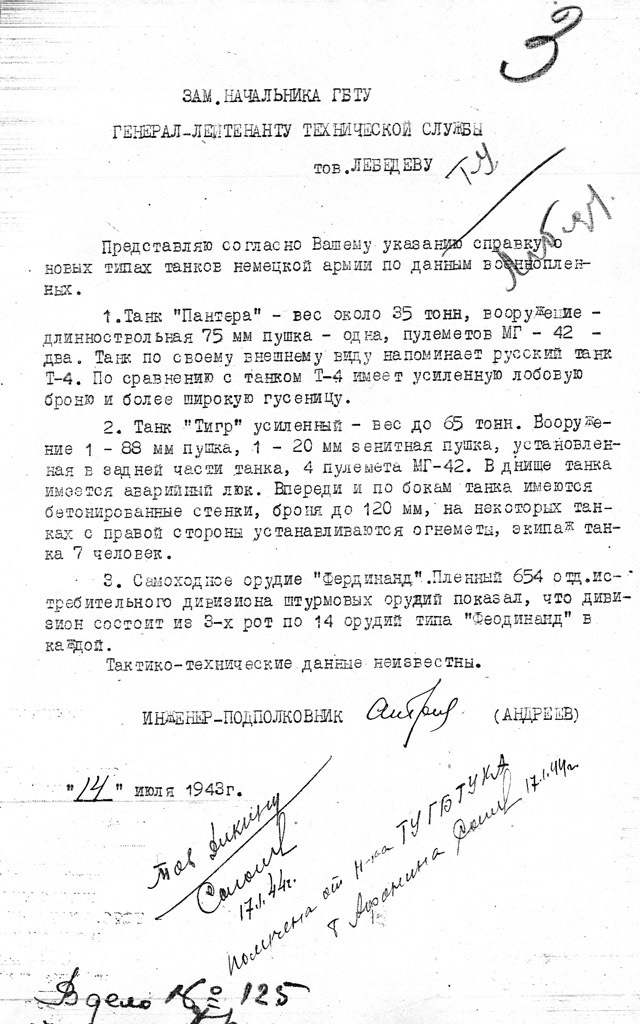
The study of the new German vehicle began on July 15th, during the course of the battle. A group of officers from the NIBT proving grounds consisting of Engineer-Colonel Kalidov, Senior Technician-Lieutenant Kzhak, and Technician-Lieutenant Serov arrived at the Central Front. By that point, the fighting at Ponyri and the 1st of May farm had ended. In addition to inspection of the knocked out vehicles, the specialists questioned German prisoners. Soviet soldiers and officers that took part in the fighting also shared some information. Finally, the Soviet specialists got their hands on German instructions on the Ferdinand.
Interrogations resulted in a large amount of information, including the organization of anti-tank battalions that used Ferdinand SPGs. In addition, the NIBT staff received information on other units that fought alongside the 653rd and 654th battalions.
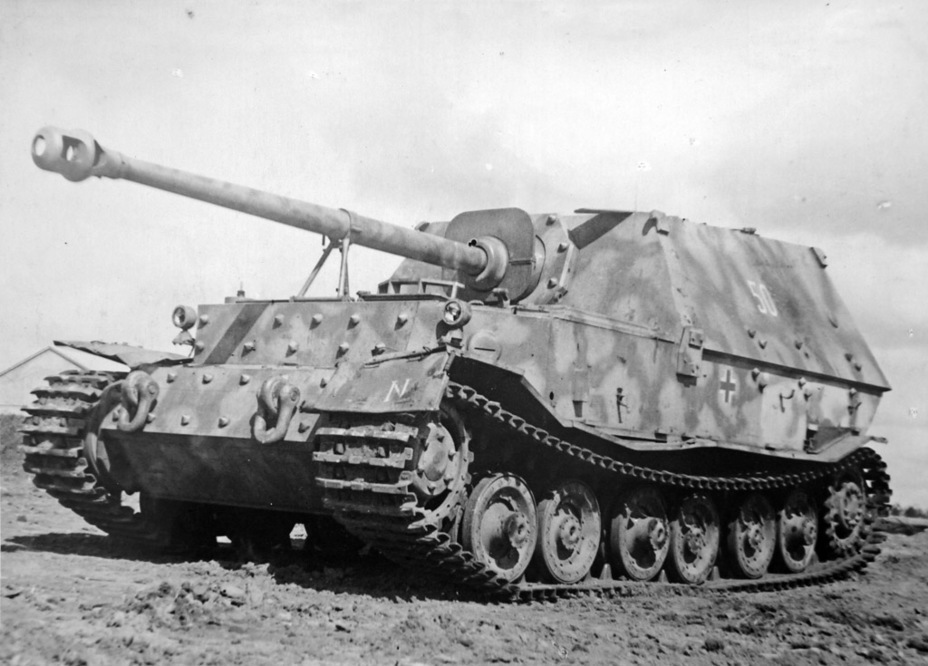
The information obtained made it possible to reconstruct the part the Ferdinands and their neighbours, StuH 42 and Sturmpanzer IV SPGs, played in the battle. The Ferdinands with their thick armour acted as a battering ram at the head of the main strike force. According to the information obtained, the vehicles drove in a line. Thanks to their powerful weapons, capable of knocking out Soviet tanks from a large distance, they could open fire at 3 km. When necessary, the German vehicles retreated, showing only the thick front armour to the enemy. Even in retreats, they could continue firing. Firing was done from short stops.
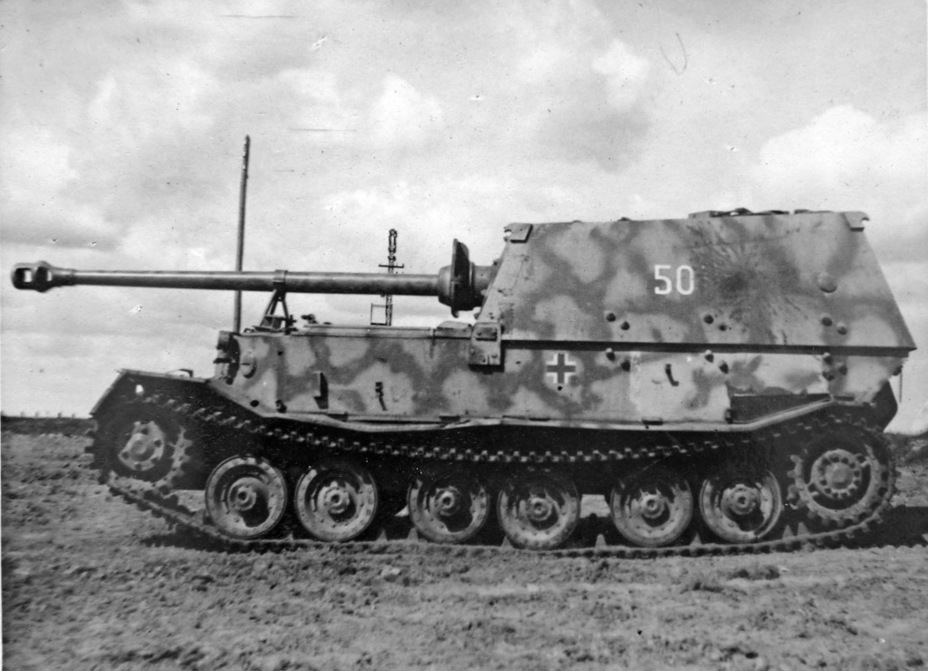
Soviet tank guns were nearly useless against well protected German SPGs. Of the 21 vehicles inspected by the GBTU specialists, only one, #602, had a breach in the left side. The shell hit the fuel tank and caused a fire that destroyed the vehicle. The German tactics could have worked, if not for one issue. They were attacking an echeloned defensive line which consisted of more than just tanks. Soviet sappers turned out to be the Ferdinand's most dangerous enemy. 10 vehicles were destroyed by mines and explosives, including SPG #501. This SPG, serial number 150072, was the vehicle of Oberleutnant Hans-Joachim Wilde, the commander of the 1st battery (5./645) of the 654th Heavy Tank Destroyer battalion.
5 Ferdinands took a hit to their running gear and were immobilized. Another two took hits to the running gear and cannons. Vehicle #701 was the victim of Soviet artillery. A shell hit the rooftop hatch from above, penetrated, and blew up inside the fighting compartment. Another vehicle was hit by a bomb and completely destroyed. Finally, Ferdinand #II-01 from the HQ unit was destroyed by Soviet infantry. A precise throw of a Molotov cocktail caused a fire, and the crew burned inside.

In total, the losses of the Ferdinand battalions were even higher. During Operation Citadel, 39 SPGs were irreparably lost. The fighting at Ponyri showed without a shadow of a doubt that the Red Army had learned how to fight a stronger enemy, since the German tank forces undoubtedly had the advantage. Soviet industry only gave a proper reply to German tanks and SPGs in the spring of 1944, when the T-34-85 and IS-2 went into battle. Nevertheless, the Germans lost at Kursk. As the fighting at Ponyri showed, an advantage in tanks was not always the deciding factor. The Ferdinands could not punch through the northern flank.
To Kubinka for experiments
The first group of specialists from the NIBT proving grounds left the battlefield on August 4th. On August 24th, a second group arrived, consisting of Engineer-Major Hinskiy, Senior Technician-Lieutenant Ilyin, and Lieutenant Burlakov. The task of this group was to collect the most valuable German vehicles on the Central Front until September 8th, and then deliver them to the NIBT proving grounds. Two vehicles were recovered. Aside from the aforementioned #501, an SPG with serial number 15090 was taken. It was also knocked out by a mine. One vehicle was used for study and trials, the other was shot up with domestic and foreign weapons.
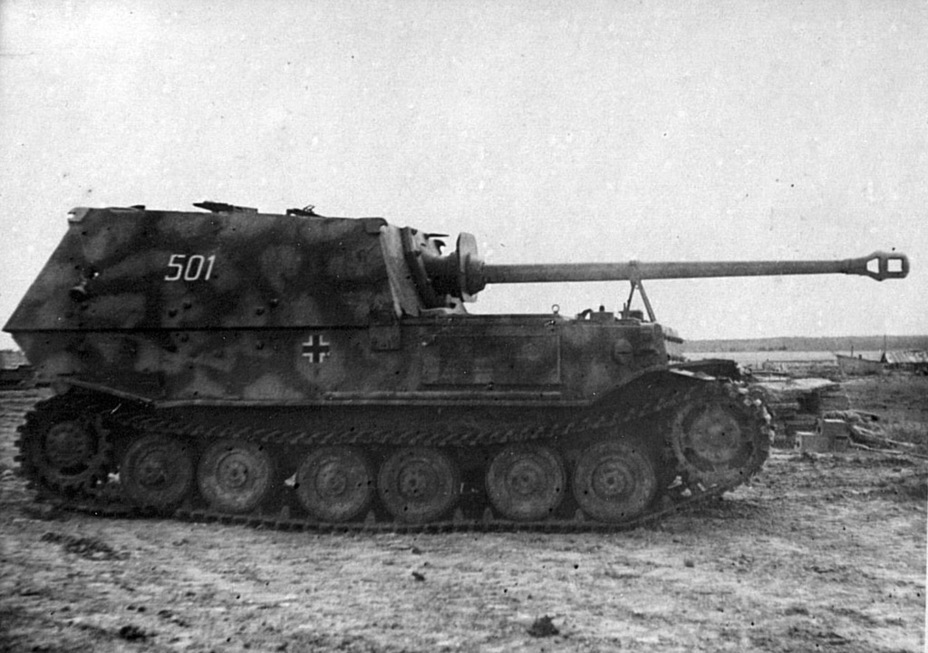
The study of the captured vehicles began even before the arrived at the proving grounds. The first firing trials against a Ferdinand were held on July 20th and 21st. It turned out that the side of the SPG can be penetrated by a 45 mm subcaliber round from 200 meters. The 76 mm ZIS-3 could penetrate it from 400 meters. For the 85 mm 52-K and 122 mm A-19 the side armour was not a problem. It's worth mentioning that the armour of the Ferdinands, especially vehicles before #150060, was worse than that of the Tiger. Because of this, subsequent trials against #150090 had slightly different results.
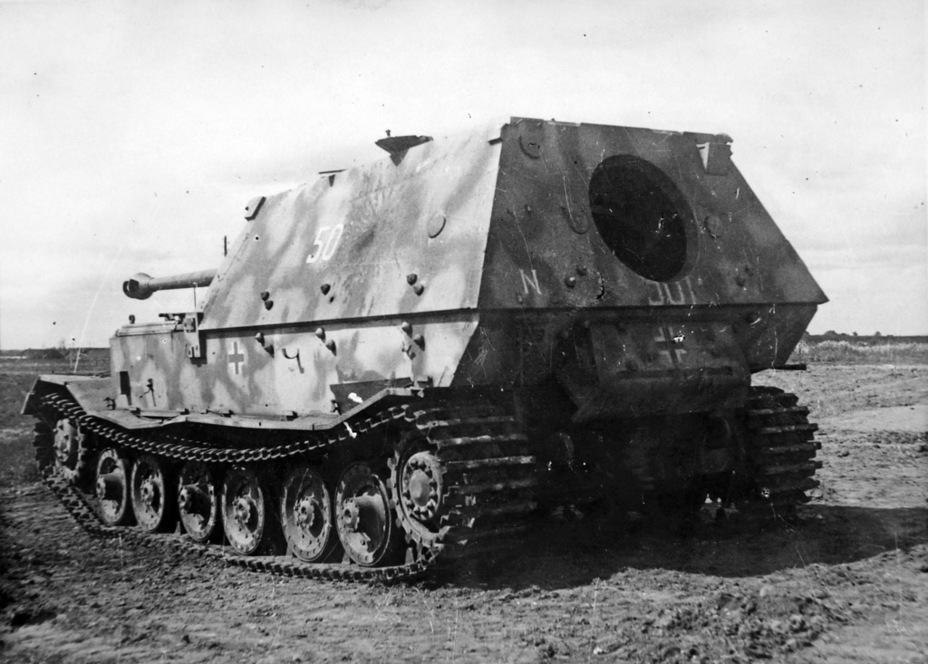
Captured documents were also studied. By July 21st the Red Army had the precise characteristics of the German SPG. It was also precisely known how many Ferdinands were built. The data was discovered within some instructions on the German armament captured along with other documents.
«The armour and armament make it an exceptionally powerful weapon in combat against tanks and during support of offensives against strong enemy resistance. Heavy weight, slow speed on the battlefield, and poor mobility limit its use and demand especially thorough reconnaissance. 90 units were produced, composed into a heavy anti-tank regiment consisting of two 45 gun battalions.»
The SPGs picked by the NIBT specialists arrived in Kubinka in September of 1943. Study of vehicle #501 began immediately upon arrival. There was no talk of mobility trials, as there was simply no time. Instead, a brief technical description of the «Ferdinand (Tiger P)" SPG was composed. The characteristics of the vehicle recorded were fairly precise due to the available information.
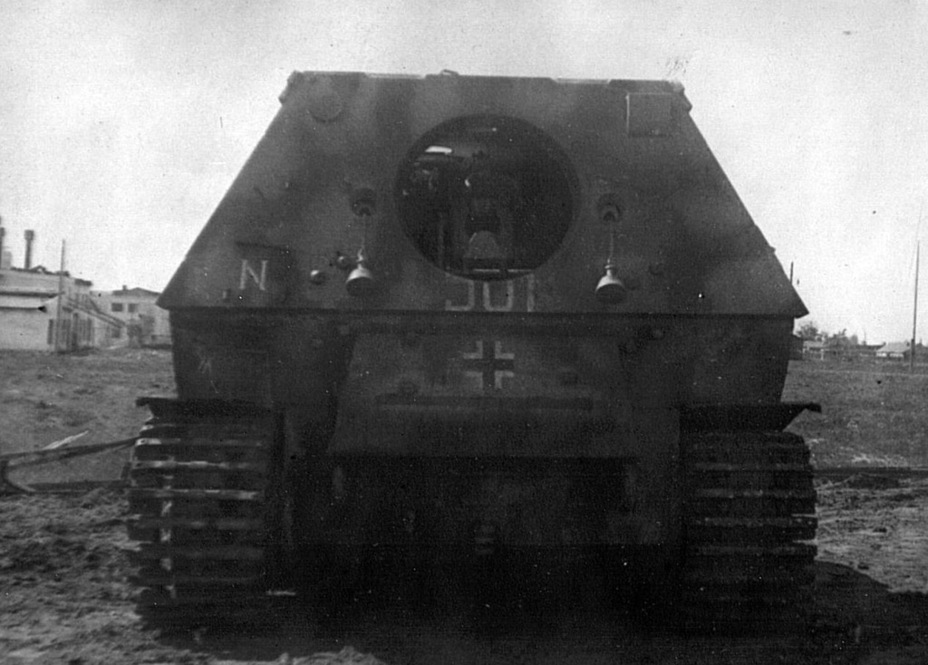
The evaluation of the German novelty was mixed. The armour and powerful armament were obvious advantages. However, the armament of the vehicle raised some questions. Study of the 88 mm Pak 43 showed that its aiming speed was slow. It was only possible to fire from standstill or from short stops. The visibility from the vehicle was deemed poor by Soviet specialists. This opinion was mirrored by German engineers. When the Ferdinand was modernized in the fall of 1943 (about when the name of the vehicle was changed to Elefant) a commander's cupola was added, although it did not significantly improve things.
Another significant drawback was the ammunition capacity consisting of only 38 rounds. Crews took it upon themselves to correct the situation. Wooden ammunition racks hastily constructed on the battlefield were found in knocked out SPGs.
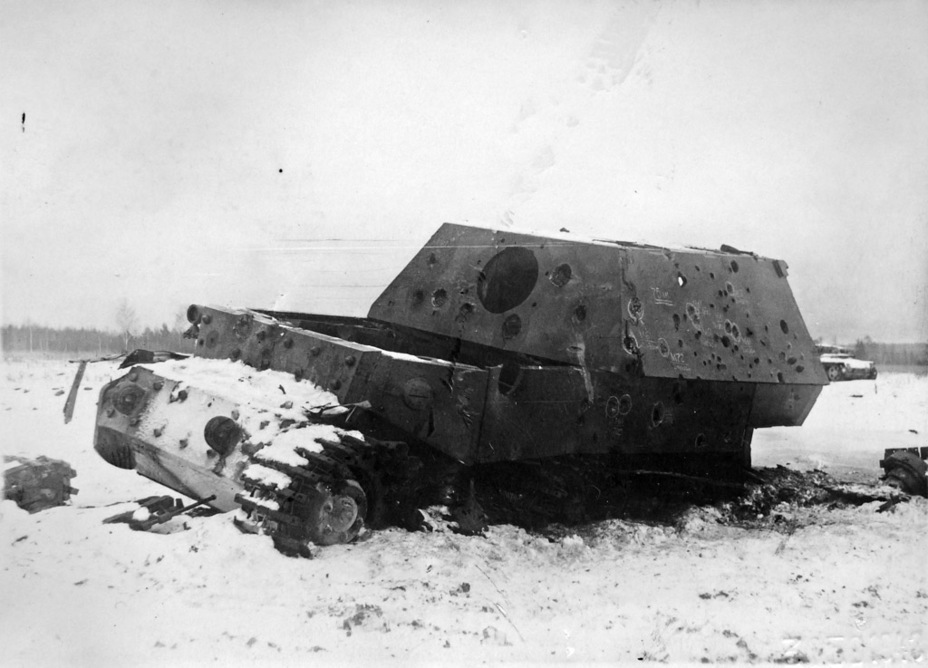
The technical description was hardly the most important task for the NIBT specialists. It was much more important to discover how and where this novelty could be destroyed. The threat posed by the Ferdinand was taken seriously after Ponyri. The vehicle definitely made its impact on Soviet tankers and infantry. The spectre of a steel colossus that was nearly impossible to penetrate from the front turned up on all sections of the front. It was necessary to know precisely which guns and at what ranges could penetrate its armour.
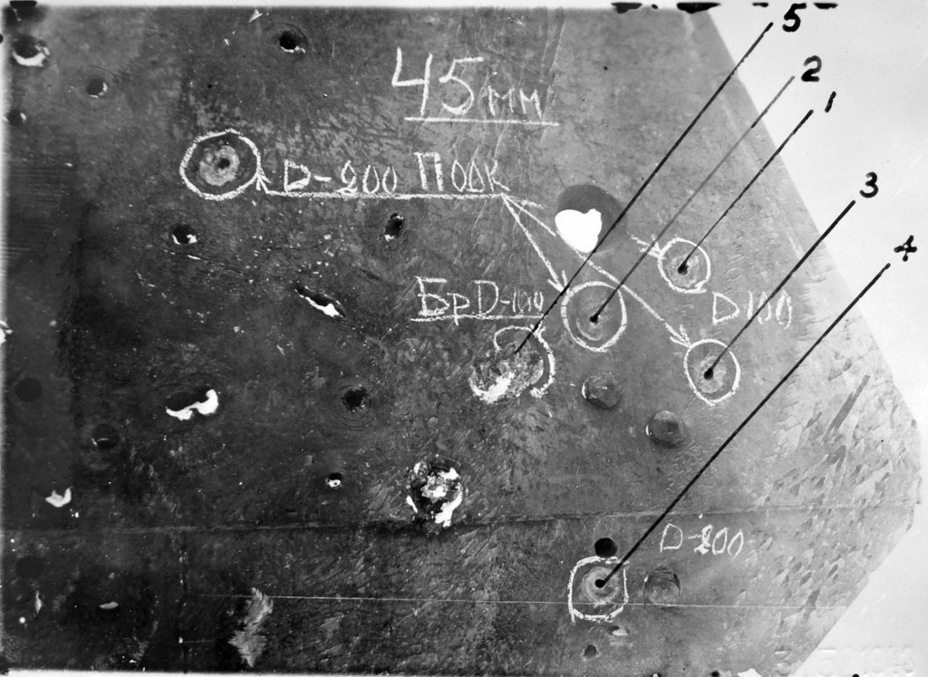
The trials program was approved on September 29th, but only began on December 1st. During this time, the list of weapons that would be tested against the German SPG was enlarged. In addition to German and Allied weapons systems, the NII-6 (later RPG-6) anti-tank grenade was tested. As trials showed, the HEAT grenade confidently penetrated the side of the SPG, after which the jet penetrated an inch-thick wooden shield inside the hull.
Next was the 45 mm gun on the T-70 tank. Its armour piercing shell failed to penetrate the German armour from 100 meters, which was expected. However, the subcaliber shell penetrated both the side of the hull and the casemate from 100 meters. At 200 meters, only the side of the hull could be penetrated. The casemate proved a more difficult target.
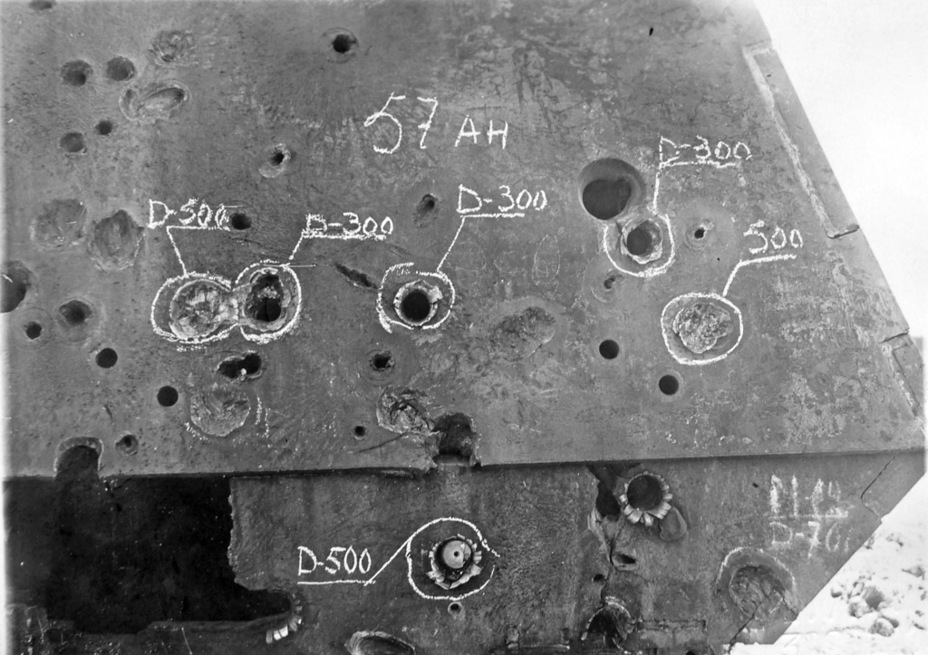
It was also possible for the 57 mm gun installed in the Churchill tank to penetrate the side armour. The 80 (85) mm thick armour could be penetrated from 500 meters. This was the 43 caliber long gun. Valentine IX/X and Churchill III/IV tanks delivered in 1943 had longer barrels.
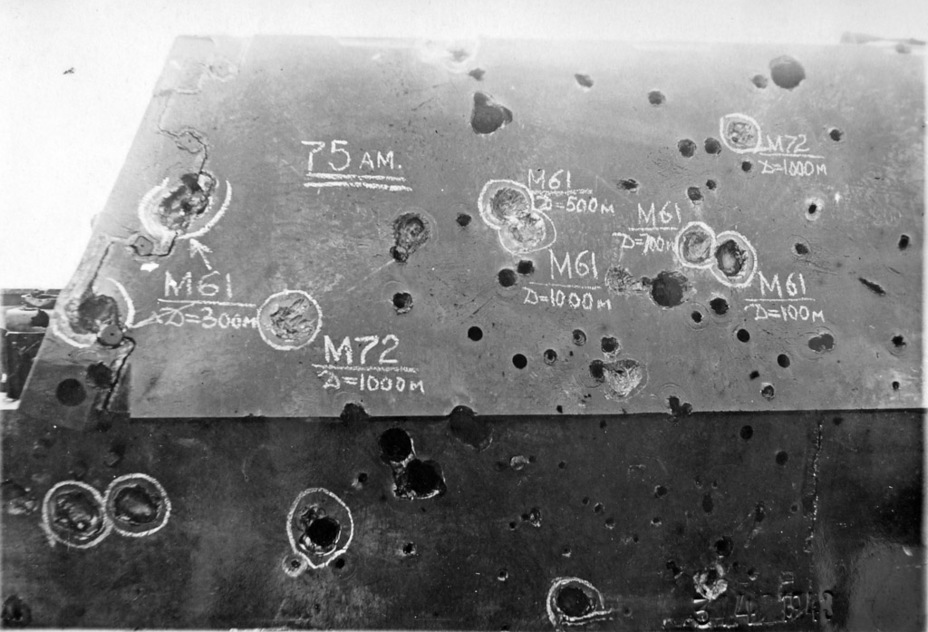
The performance of the 75 mm M3 gun installed in the American M4A2 tank was worse. The M61 armour piercing shell could not penetrate the side of the casemate at even 100 meters. However, two hits near the welding seam connecting the left and left-front casemate plates resulted in its cracking. The same shell could penetrate the side of the hull at 500 meters. The Soviet 76 mm shell fired from the F-34 performed worse, but this was not a surprise by this point.
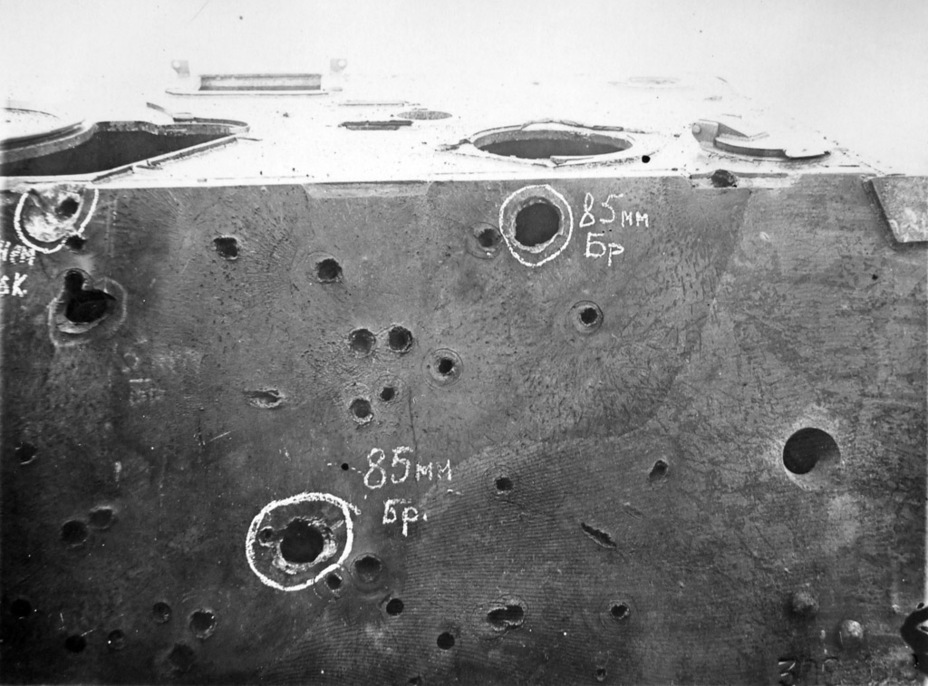
The results of the D-5S gun installed in the SU-85 SPG were also not surprising. The hull and casemate could be confidently penetrated from 900 meters. The armour spalled from the inside on impact, and the resulting fragments left no hope for the crew members inside. However, by the time the SU-85 and other Soviet vehicles armed with 85 mm guns arrived on the battlefield, the chances of meeting a Ferdinand were slim.
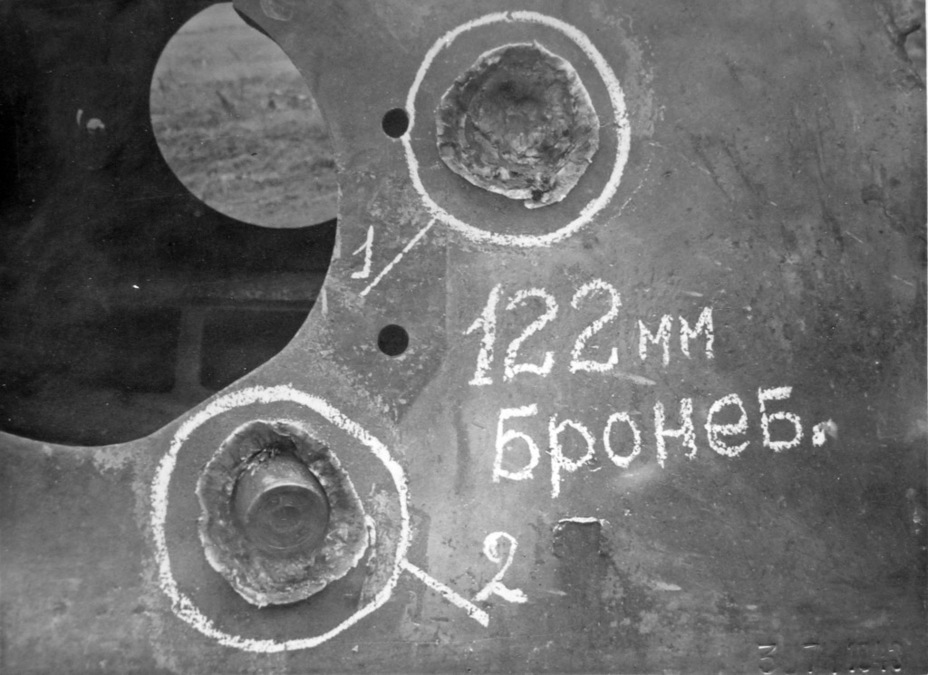
The above weapons were not used to fire at the front armour, which was predictable, as they were unlikely to penetrate 200 mm of armour. The first gun to fire at the front of the Ferdinand was the 122 mm D-25 installed in the experimental IS-2. The first shell fired from 1400 meters at the front of the hull punched through the applique armour and ricocheted. The second left a 100 mm deep dent 210×200 mm in size. The third shell partially entered the armour, but became lodged. The penetration was not counted, but in practice it would still have knocked out the crew. Firing was not done at a shorter distance, but further events showed that shooting at 1200 meters or closer resulted in penetration. The trials commission concluded that the maximum penetration range was 1000 meters.
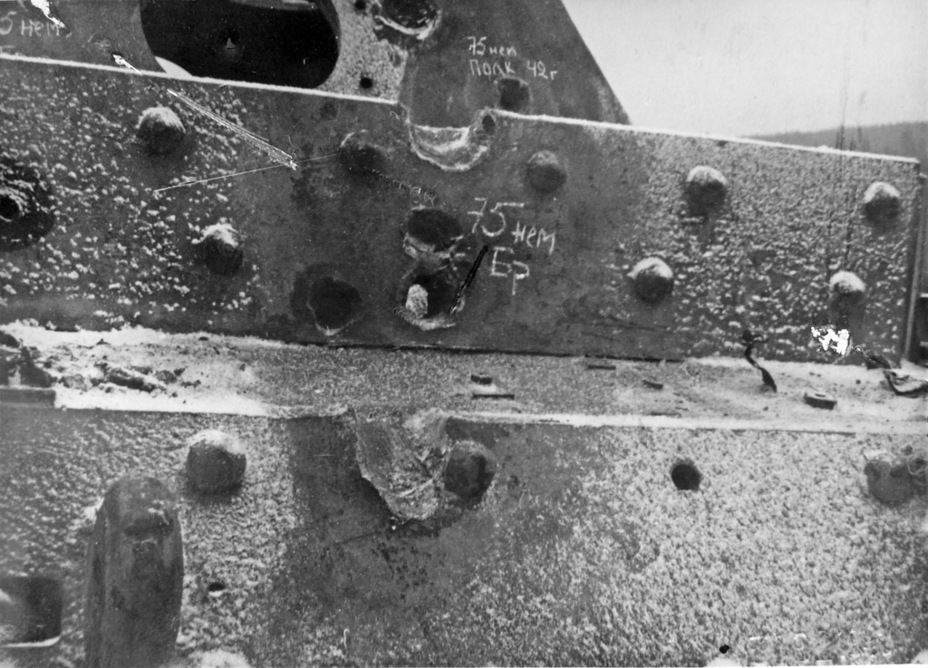
The 75 mm KwK 42 L/70 in the Panther Ausf. D followed. At 100 meters it could penetrate the front of the hull, but a shot against the front of the casemate from 200 meters failed to penetrate.
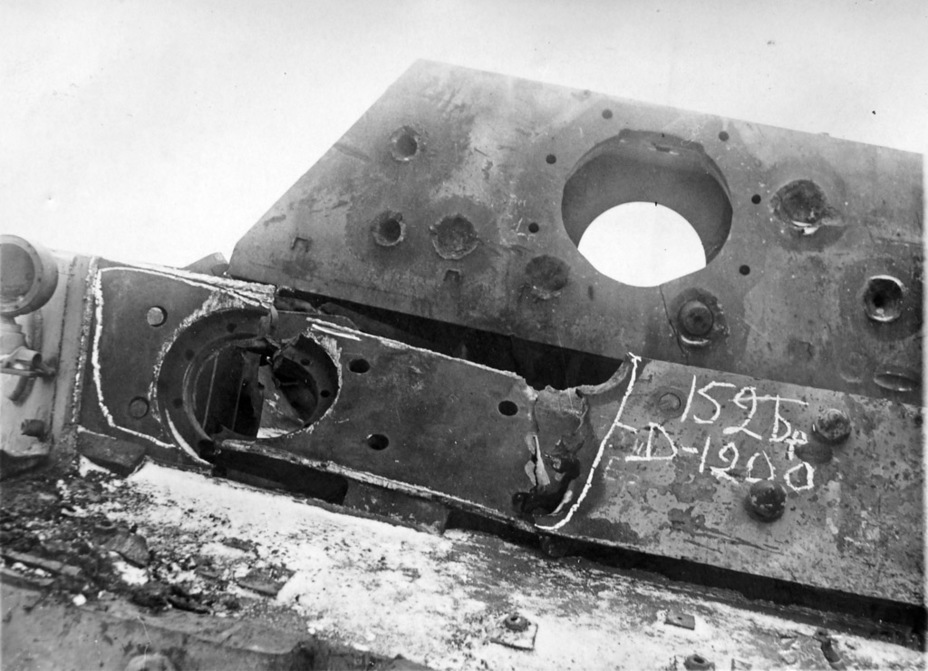
The most fearsome trial was the firing of the 152 mm ML-20 gun-howitzer installed in an experimental ISU-152. A second hit on the front armour broke the main armour and applique armour in half. This result was possible in part due to the open machinegun mount.
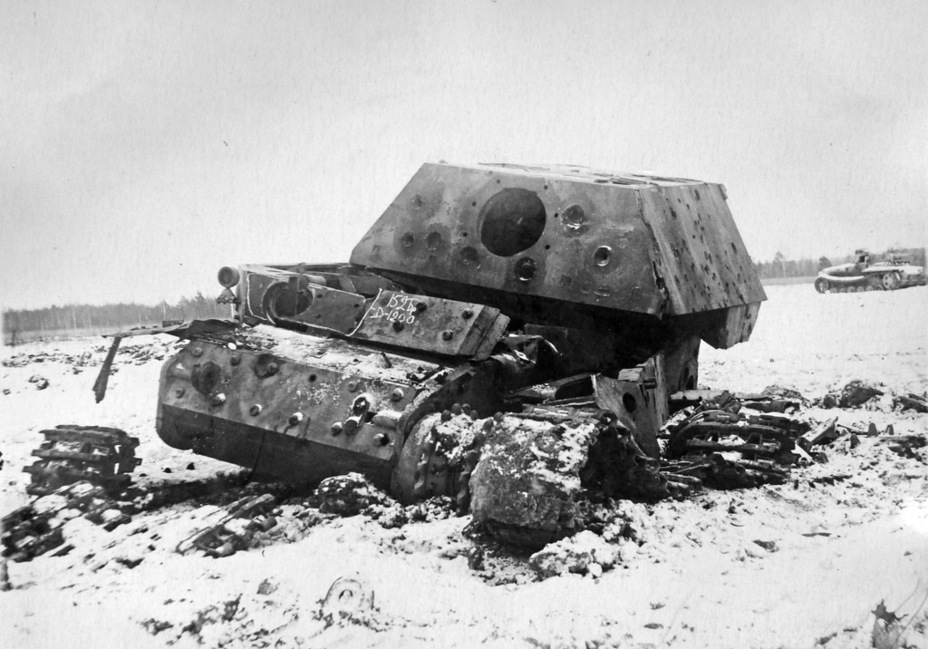
Trials stopped at that point, as the ML-20 reduced the Ferdinand to a heap of scrap. It was proposed that the destroyed vehicle be displayed in Moscow, but the decision was reversed. Instead, a different vehicle that was the target of trials was sent, perhaps the one that took part in the trials during the summer of 1943. In addition, an intact SPG was sent. #501 remained in Kubinka.
A catalyst for the arms race
The Main Armour Directorate of the Red Army (GBTU) took the appearance of the Ferdinand very seriously. This burst of activity was partially triggered by the appearance of the Panther. Of course, it cannot be compared with the jolt given by the appearance of the Tiger, but a letter to Stalin from the GBTU chief, Lieutenant-General Fedorenko, was sent in early September of 194. In connection with the appearance of new German armoured vehicles, he proposed a series of prospective tanks and SPGs.
A direct consequence of the appearance of the Ferdinand was the Object 701 tank, the future IS-4. In addition, work on the D-25T gun, started in May of 1943, was expedited. An even more powerful gun with a muzzle velocity of 1000 m/s was proposed. Work on more powerful 75 and 152 mm guns began. Finally, the issue of a 100 mm gun with naval ballistics was raised once more. This was the start of the D-10S, the armament of the SU-100 SPG.
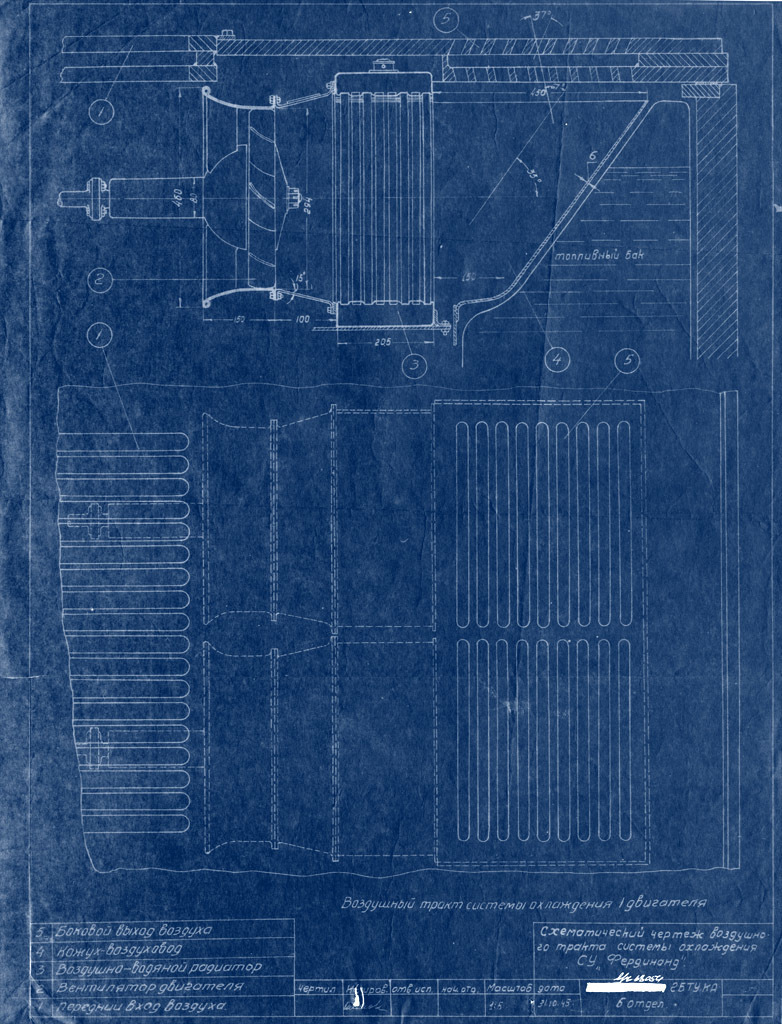
This was just a fraction of the programs launched or relaunched in connection with the Ferdinand. Thanks to the heavy German SPG, the Soviet electric transmission program was revived. The topic was explored in the USSR since the early 1930s, and such a transmission was proposed for the KV-3. A mass produced German vehicle with this kind of transmission forced Soviet specialists to return to this topic. However, the Soviet engineers did not merely copy German designs. The program which science fiction writer (and also military engineer 3rd class, chief engineer of factory #627) Kazantsev took part in developed on its own.
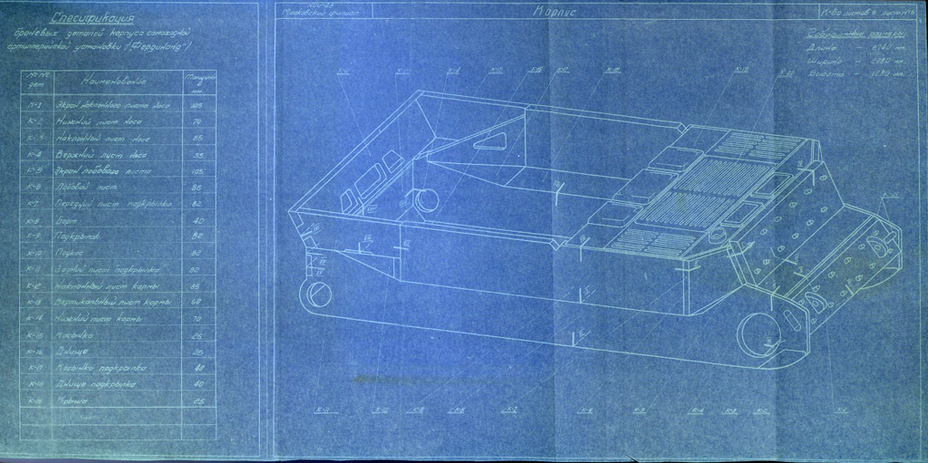
The design of the German vehicle was interesting to the USSR. The hull and casemate were studied by NII-48, the leading researcher in armour. A number of reports were prepared as a result of these studies. NII-48 engineers were creating optimized armour and hulls, which could give good protection at a low weight. The result of this work was the rationalized shape of hulls and turrets that can be seen in implementation from the later half of 1944 in heavy, and later medium tanks.
The study of the weapon used on the Ferdinand affected this development. The creation of armour capable of resisting this gun was a priority for Soviet engineers for 1944. They managed to deal with the task much better than their German colleagues. The first experimental tanks whose armour was confidently capable of standing up to the German weapon were ready by late 1944. The IS-3 and T-54 tanks grew out of these designs.
Other elements of the Ferdinand were studied, such as the suspension. This design didn't gain any traction in Soviet circles, but a degree of interest was shown. A report on the study of the Ferdinand suspension was composed for the British at their request.
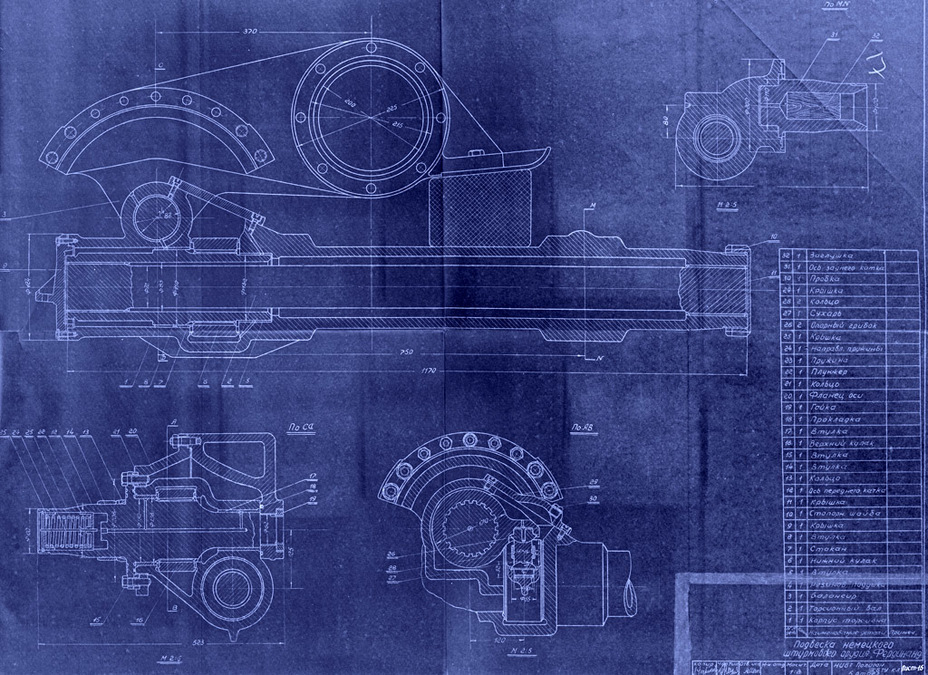
The most important result of study of the German vehicle was the appearance of measures to be used against it. The IS-2 heavy tank and ISU-122 heavy SPG were accepted into service in the Red Army. At least two cases where the IS-2 encountered an Elefant in the summer of 1944 are known. In both cases, the IS-2 under the command of Lieutenant B.N. Slyunyaev came out on top. The battle on July 22nd, 1944, was the most notable. A column of the 71st Guards Heavy Tank Regiment was headed towards Mageruv when the heavy tanks were attacked from an ambush. Slyunyaev's tank moved out towards the crossroads under cover from another tank. After observing for 10-15 minutes, the IS-2 approached to 1000 meters and opened fire. As a result, an Elefant, two anti-tank guns, and an APC were destroyed.
Three weeks later, the same regiment was the first to face German Tiger II heavy tanks. Here it turned out that Soviet engineers were sufficiently forward thinking. The King Tiger had even more robust front armour than the Ferdinand, but this did not prevent Soviet tankers from winning the duel against the Germans without losses. In preparing to fight the Ferdinand, Soviet tank forces prepared to fight a new generation of German heavy tanks. As a result, the Wehrmacht failed to achieve such a noticeable tank advantage as the one enjoyed during the Battle of Kursk. As for other attempts to overturn the established balance of power, German industry simply had no time.
Translated by Peter Samsonov. Read more interesting tank articles on his blog Tank Archives.
Sources:
- Central Archives of the Russian Ministry of Defence;
- Panzerjager Tiger (P) Ferdinand, Юрий Бахурин, Tactical Press, 2014 год, ISBN 978-5-906074-18-8.







